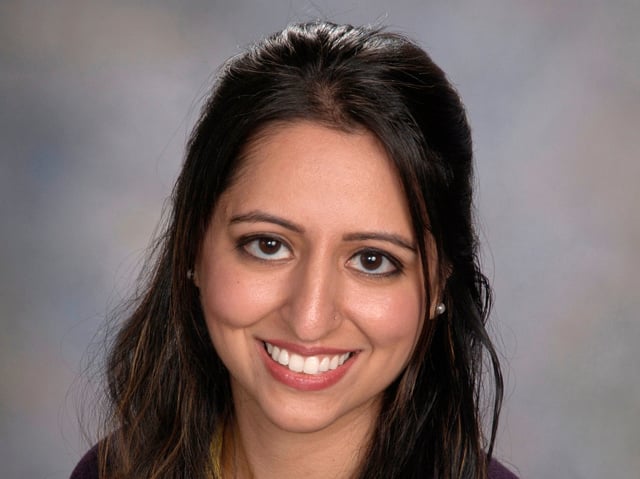What are Dense Breasts? What You Need to Know About Dense Breast Tissue
What is breast density and why is it important? How does a woman know if she has dense breasts? Can she tell on her own? Is having dense breast tissue a risk factor for breast cancer?
These are just a few of the questions Brem staff asked Dr. Salman, a Brem Fellow and diagnostic radiologist. In this short interview, you will learn everything you need to know about dense breast tissue and what you need to do if you have dense breasts.
Breast density is the term used for describing how much connective tissue there is in breasts, as compared to the amount of fatty tissue. Breast density is important because dense breast tissues can conceal cancer on mammograms and a woman’s risk for breast cancer is 4-6 times more likely if she has dense breasts.
How does a woman know if she has dense breasts? Can she tell on her own?
There is no way to tell whether a woman has dense breast tissue by sight or touch. Dense breasts can be in large or small, perky or saggy breasts. Breast density can only be determined by a mammogram. Laws in 38 states (plus D.C.) mandate that doctors notify patients if they have dense breast tissues after conducting a mammogram. If a woman gets her mammogram results but doesn’t receive information about her density, she should call her doctor and find out.
Do a lot of women have dense breast tissue? Is it normal?
Yes, dense breast tissue is completely normal. Around half of all women above the age of 40 have dense breast tissue.
Are there certain demographic factors that make one more likely to get breast cancer?
Yes. Age is the primary factor impacting breast density. Breasts become less dense with age so younger women tend to have denser breasts. That said, breast density usually does not change markedly over the course of a woman’s lifetime. Demographics may also play a slight role in breast density. Asian women tend to have higher breast density than most others. Studies have found that there are higher rates of breast cancer among different demographics, but these findings are not directly related to breast density.
How is density measured? Is there a range?
Breast density is measured by a BI-RADS score of A-D, with A being mostly fatty (not-dense) and D being extremely dense. Categories C and D describe high levels of dense breast tissue. I recommend supplemental essential screenings in addition to mammograms for women with dense breasts.
If I’m ranked as having a higher category (C-D), what are my next steps?
If a woman’s breast tissue is ranked as Category C or D, she should get additional essential screening on top of an annual mammogram. A woman with Category C & D dense breasts, without other risk factors for breast cancer, may need to get a yearly ultrasound in addition to the mammogram. Whereas, women with higher risk factors for developing breast cancer may need yearly MRIs on top of annual mammograms. Breast cancer screening is not one size fits all. A personalized screening plan should be developed with each woman’s doctor based on her individual risks.
What does an ultrasound do as compared to a mammogram?
On a mammogram, dense breast tissue shows up as white and so does breast cancer, making the cancer much harder to find. On an ultrasound, the dense breast tissue appears white, but the cancer looks darker gray. This contrast allows for easier detection.
Does having dense breast tissue actually make it more likely that a woman will get breast cancer? Or is it just that the cancer is more likely to be missed on a mammogram?
Yes and yes. Having a higher breast density increases a woman’s chance of developing breast cancer by about 4-6 times. Because dense breast tissue and breast cancer both appear white on mammograms there is little contrast. This means that up to 50% of cancers in dense tissue are missed on a mammogram without other essential screenings like ultrasound or MRI.
Will an ultrasound be covered by insurance?
Sometimes. As of December 2021, 12 states and the District of Columbia have laws that mandate full coverage of screening breast ultrasounds for women with dense breast tissue. There are efforts to pass similar laws in other states. However, in most places, coverage is still variable. Many insurers “cover” ultrasounds but also require steep out-of-pocket costs for patients. If you have trouble affording your ultrasound, speak with your navigator or provider for assistance.
If cancer can be missed on a mammogram in a woman with dense breasts, is it important for her to still get mammograms?
Yes. Mammograms are still very important because they can detect other things that can most easily be seen on a mammogram such as distortions in breast tissue (if tissue is being pulled or tugged on by a cancer) and micro-calcifications (which can be early indicators of breast cancer).
How has COVID influenced screening and check-ups? What’s the current state of screening numbers and procedures over at GW?
In the early days of the pandemic, breast screenings and check-ups dropped by nearly 89% in April of 2020. Breast centers are now back and actively screening in safe ways during the COVID pandemic. Sadly, the National Cancer Institute predicts that at least 10,000 additional lives will be lost over the next decade because of COVID-related screening delays. Screenings are still down, but GW and other imaging centers are taking precautions to keep people safe, including staggering appointments, sanitization, distancing, and masking. Screenings are still a bit down, but nothing like the halt in 2020. It is vital that women continue to screen annually and be vigilant about their breast health.
To learn more about breast density and other factors affecting your breast health — visit our digital resource library.

About Dr. Anam Salman
Dr. Salman was raised in Maryland and attended the University of Maryland, Baltimore County, where she obtained her undergraduate degree in Biochemistry and Molecular Biology. She went to New York Medical School for her medical degree and then returned home to the DMV and completed an intern year in internal medicine at Mercy Medical Center in Baltimore. She now works in Diagnostic Radiology at the George Washington University Hospital.



